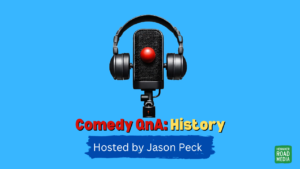I was at my Toastmasters club Grosvenor Speakers, this past Monday night. I was in the role of Time-Keeper. For anybody reading this blog unfamiliar with any of the support roles at Toastmasters use the previous link.
I had taken on this role because I have yet to do the role and also I need to complete my Competent Leadership manual (I didn’t previously get myself evaluated when I took roles on in the past hence having to play catch up now).
The president of the club mentioned before the evening began a speaker had dropped out and asked anyone (i.e.: me) if they had a speech. I didn’t have one prepared. Lesson learnt: always have a speech ready to go to pull out of the bag at short notice!
I thought about it for a few minutes and came up with a subject that I was really interested in: Web 2.0. I’m still learning lots about this subject, but I already know a fair amount about blogs, Myspace and Facebook. I am in no way an expert on this subject, but I am certainly passionate about it and a keen student!
So on the back of my club’s programme of events I Mind Mapped a speech. I gave it an effective three-point Toastmasters structure, an opening and a closing. Each point I made, I backed it up with examples.
Every spare moment I had between timing the different parts of the evening (which wasn’t many) I looked over the Mind Map. When I was announced as the second speaker for the evening I took the Mind Map with me and went to the stage.
I glanced at my notes once, just before starting then I launched into my speech.
It flowed smoothly and never dropped a beat. I had a pretty good grasp of my subject, so the information flowed. I did my best not to overwhelm people with detail and bit too technical (believe you me, I’m no webmaster).
I made sure that I opened my speech by getting the audience to raise their hands showing me how many people in the room had heard of my subject. It was just under half. So I knew how I had to pitch it.
Around the 7 minute mark I delivered a memorable closer, which rhymed and got me my only laugh of the evening, and I left the stage.
I got some very nice feedback both from my fellow toastmasters as well as my evaluator. I was complimented on my energy and ability to think on my feet.
My main criticism was that I didn’t allow for any pause for thought. Not that I just rattled through my speech at break-neck speed, but that I could’ve taken the time to create more tension in my audience.
It was a fair comment. However, it’s not going to be something that I am overly concerned about as I was making it up as I went along.
I wanted to make sure that I got my message across and had a clear and definite structure, both of which I achieved. I wasn’t bothered about getting laughs. I wanted things to be as clean as possible.
I saw that over at “The Public Speaking Blog” fellow speaker Eric Feng talks about Crafting a Speech in 60 Seconds using a technique by Richard C. Borden. (Edited to note Eric Feng’s blog is no longer active as at 2019) Whilst I know the technique and agree that it is very useful, it’s something that I think is good to have in the toolbox, but not really necessary.
I think that if you know your subject well enough so your passion comes through, you find an angle on how it applies to your listeners (in my case I spoke about the importance of Web 2.0 in terms of public speaking and toastmasters) and you use a solid structure you can certainly create killer content off the cuff!!




3 comments
1 pings
Author
Hi Eric, I completely agree. Tools are just tools. It might be interesting to see how the two techniques that we have blogged about work together. I will absolutely give the Borden method a shot in the future. Although, hopefully, I’ll have a bit longer than 60 seconds to create it in.
The particular aspect of the Mind Mapping approach that I like is the fact that not only does it help to organize your thoughts (and therefore your speech), but it’s also a memory tool, which can help with remembering what you have to say.
Thanks for popping by and sharing.
Jase
Hey Jason, I think at the end of the day, tools are just… tools. It really depends on the context. As the saying goes, a tool is only as powerful as the person who wields it. Personally I think the Borden method is easy to remember and intuitive so it will serve well for speakers under stress, and needed to say something fast.
You know what will be fun. Share with me the mind map that you did for your speech. We can see how to synergise. Another method is the PREP. Point – Reason – Explanation – Point. Heard about it?
[…] never really intended to write a follow up to my previous post. But I have because both myself and Eric Feng, blogged on the same subject. Eric spoke about the […]